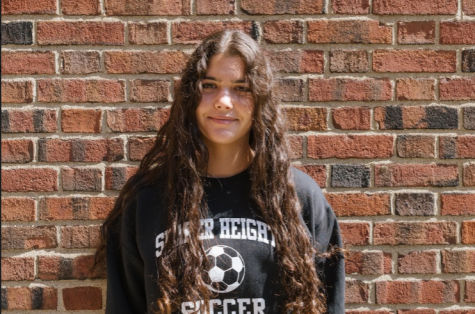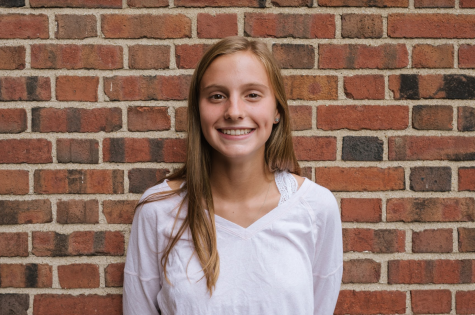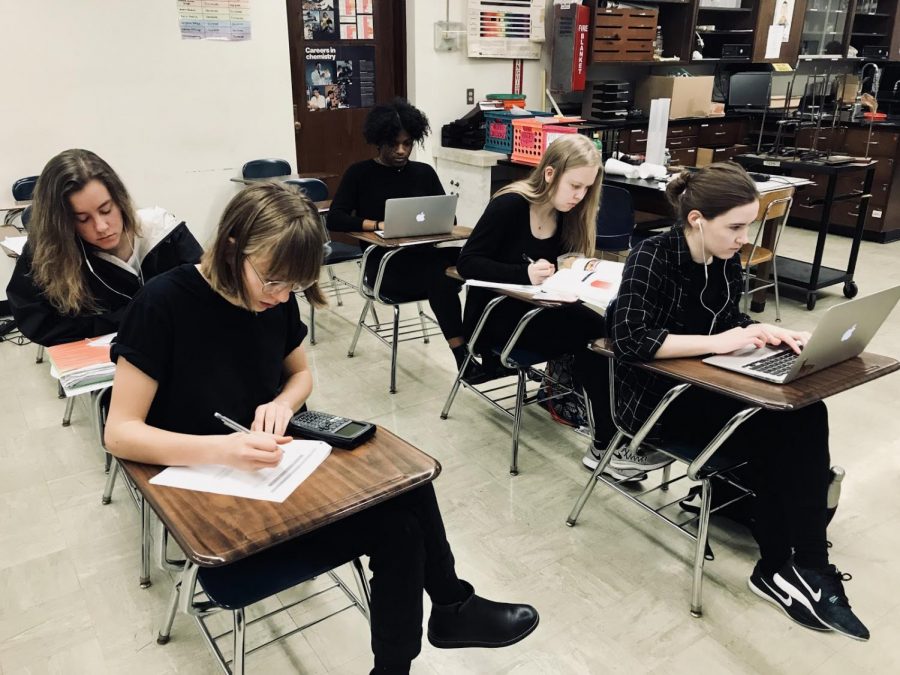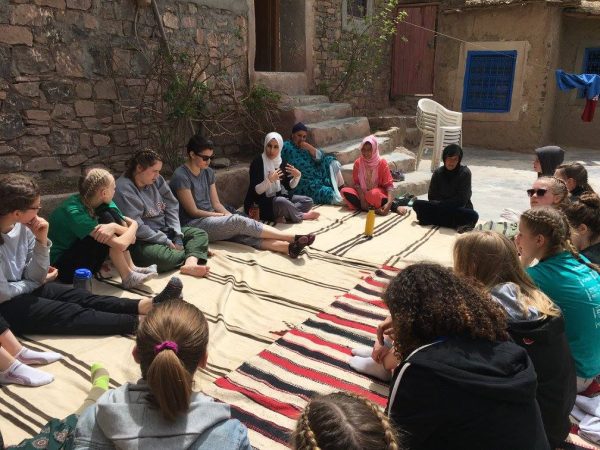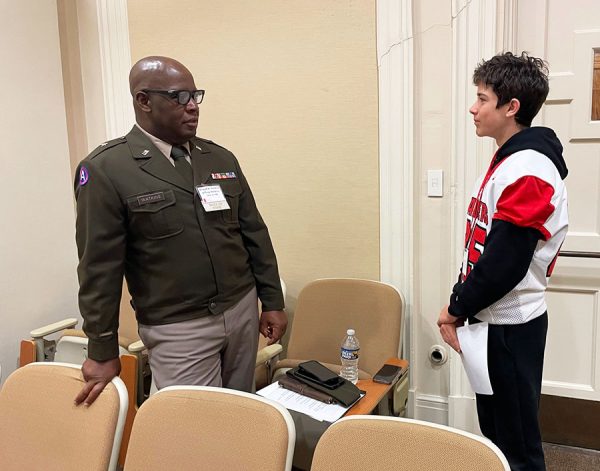Students Wear Black for Shooting Victims
The student-organized blackout provided a platform for students to voice concerns about lack of legislation
A senior chemistry class works on an assignment during the blackout day. “It could potentially really influence our congressman and our senators and show them that just because we can’t vote, and a lot of us aren’t 18, we can still have a voice in society,” senior Sophie Browner said.
Shaker students arrived at school dressed in black in support of the victims of the Marjory Stoneman Douglas High School shooting and in protest of gun violence in the United States today.
“We shouldn’t be having to ask the government to be safe at school — that just shouldn’t even be a debate,” sophomore organizer Louise Spadoni said.
One week ago, a former student entered MSD high school in Parkland, Florida with an AR-15 rifle and killed 17 people.
The shooter, 19-year-old Nikolas Cruz, entered the building with his gun and multiple loaded magazines concealed in a backpack and duffle bag. He began firing in the hallways, classrooms and on school grounds. Cruz then discarded his weapon and magazines in order to blend in with students running from the school. He was later arrested in a neighboring town.
Students across the country, along with those from MSD, have taken it upon themselves to protest the gun violence marked by this incident and past shootings in Sandy Hook, Columbine and Chardon.
“People keep saying, ‘How many people have to die before they change the laws,’ but I disagree with that. I think it’s, ‘How many people have to suffer,’ because when one dies, multiple people suffer,” freshman Danielle Tall said.
The Women’s March organization is pushing for a protest on March 14, 2018. “Women’s March Youth EMPOWER is calling for students, teachers, school administrators, parents and allies to take part in a #NationalSchoolWalkout for 17 minutes at 10am across every time zone on March 14, 2018 to protest Congress’ inaction to do more than tweet thoughts and prayers in response to the gun violence plaguing our schools and neighborhoods,” the Women’s March website stated.
Each of the 17 minutes of the walkout represents one victim of the MSD shooting.
“If it’s national, it shows that every school is basically together on this same issue,” sophomore Vivek Divakarla said.
Another school walkout has been organized on April 20, 2018, the 19th anniversary of the Columbine shooting, by Lane Murdock and others in Connecticut who live near Sandy Hook Elementary School. They are spreading information via Twitter and a Change.org petition encouraging students to wear orange, walk out of school, and to protest online and in their communities. As of today, there are over 100,000 signatures on their petition.
Student-led protests have taken root as well. In addition to the walkouts, March For Our Lives, spearheaded by MSD students and organized by students across the country, will take place in Washington D.C. on March 24. Other marches will take place in cities throughout the country.
The March For Our Lives mission statement describes the students’ motivation: “March For Our Lives is created by, inspired by, and led by students across the country who will no longer risk their lives waiting for someone else to take action to stop the epidemic of mass school shootings that has become all too familiar.”
Senior Sophie Browner thinks that the most recent call-to-action is a powerful one. “It could potentially really influence our congressman and our senators and show them that just because we can’t vote, and a lot of us aren’t 18, we can still have a voice in society,” she said.
The protests reached the high school in the form of a school-wide “blackout,” organized and led by Shaker students. They dressed in black in recognition of gun violence, school shootings and the lack of gun laws in the country.
“The blackout and the walkout that’s going to happen — even though maybe some people think it won’t make a difference — I actually think that it could make a huge difference,” Browner said.
Senior Abigail Herbst urged her peers to stand together with the students and victims at MSD. “It’s important to show that we’re all students and we all don’t want to die going to school — and that we all care about each other,” she said.
However, Divakarla thinks that congressional action is needed to make any change. “Just doing more walkouts and blackouts will help, but it won’t help that much,” he said. “If they bring it to Congress and they try to pass bills, it will help.”
Sophomore Isaac Weiss was impressed with the power of the blackout, but agrees with Divakarla, and said he thinks students need to talk to representatives in the national government. “I believe that the effort by the student body at Shaker is incredible,” he said. “I think that looking through the hallways and seeing a majority in black together shows great unity throughout the school, but I think that it would be so much more powerful if all the students that wore black would call a senator or congressman — or woman — throughout the state to actually try to enforce real change.”
Sophomore Jordan Green also believes in supporting victims, but thinks more action needs to be taken. Green said, “I fully support the idea of acting in solidarity with the victims, however at the same time I question what action we’re actually talking to better the circumstances that are so horrific right now.”
Several teachers, including English teacher Nikki Costa, participated in the blackout.“There’s nothing better than a community in solidarity,” she said.
Comment using your Facebook, Yahoo, AOL or Hotmail account
